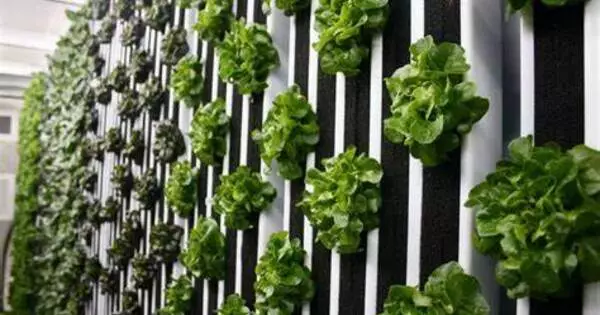Consumers are skeptical of the flavor of vertically grown greens. However, a rigorous taste test found that greens grown vertically and without soil are equally as excellent as organic greens. These are only a handful of the misconceptions that Danish customers have regarding vertically grown vegetables. Plants grown indoors, stacked, and without soil, on the other hand, have the ability to boost food security, provide more space for nature, and assure year-round access to leafy greens and herbs with short travel to consumers.
Researchers from the Department of Food Science studied if consumer preconceptions are real in the first study of its kind. In the study, researchers invited 190 individuals to blind taste and assess rocket (arugula), baby spinach, pea shoots, basil, and parsley grown organically, as well as the same vegetables cultivated vertically.
According to the study’s findings, test subjects prefer vertically-farmed items nearly as much as organic, soil-grown produced products.
“In terms of taste, we certainly have no reason to be skeptical. Indeed, the participants think that the vertically grown plants taste just as good as the ones we consider best — namely the organic ones,” says Associate Professor Michael Bom Frøst, one of the researchers behind the study.
Thirty percent of our land mass in the EU is set to be protected nature. So, somehow, we need to concentrate food production in less space. This is where an increase in vertical cultivation could well be the answer.
Michael Bom Frøst
Close race in the vegetable battle
Overall, organic greens barely outperformed vertically produced greens in the study, but participant assessments were quite close. When participants were asked to rate rocket on a scale of 1-9, with 9 being the best, it was a dead heat. Both rocket salads received a 6.6 in this category.
Furthermore, the two baby spinach and basil kinds were evaluated so similarly that there was no discernible difference between them. Pea shoots were tested twice, and each type won. Organically cultivated parsley was the only obvious winner among competitors.
As a result, the study disproves some of the misconceptions that prior research has revealed about consumer views toward vertically farmed veggies. While customers are generally pleased about the technology, they have modest expectations for veggies cultivated in this manner.
They, for example, dismiss the likelihood that vertically grown leafy greens and herbs will taste as delicious as organic ones. They also do not believe they are natural or healthful. And, according to Michael Bom Frst, this is a natural bias.
“It’s an example of the concept of neophobia, a psychological trait that we all have to varying degrees. It means that some consumers are not that happy about trying new things. This can be a major obstacle for new technologies and it is important to address through information and consumer education,” he says, adding: “This study clearly demonstrates that consumer prejudices about vertically grown products are debunked as soon as they taste them.”

What is vertical farming
Vertical farming is a type of alternative cultivation that takes occur indoors, in stacked levels, and under controlled circumstances, often with artificial light and without soil (e.g., hydroponic growing).
Vertical farming has the potential to be one of the solutions to crop insecurity in future food production areas impacted by climate change and restricted access to water and agricultural land. It also has certain inherent benefits in that meals can be grown locally and with a high yield.
Production is seasonal and climate-independent, it reduces water and land use, reduces nutrient emissions to the environment and potentially eliminates the need for pesticides. Controlled cultivation conditions make it possible to grow plants of a high and stable quality, though this requires the strict control of climatic conditions and the efficient use of resources.
Food security, sustainability goals and space for nature
According to the study’s lead author, Sara Jaeger, the new result paves the way for vertical cultivation to become more widespread than today. The farming method offers numerous advantages.
“Throughout history, technologies have been invented by humans to put food on the table. Vertical farms are grown under totally controlled conditions, which means that there is enormous food security in relation to attaining the same yield year after year,” says the researcher, who adds:
“The latest evaluation of the UN Sustainable Development Goals shows that we need to both accelerate and alter the trajectory of development. Food security, climate action and biodiversity protection are all headed the wrong way. Our food system is incredibly central to achieving the Sustainable Development Goals,” she says.
One of the major benefits of vertical culture is that it saves a lot of room because it allows you to grow in stacks and harvest more frequently than outdoor growing. This would allow for the rewilding of more agricultural land. Furthermore, cultivation facilities can be located adjacent to major cities, making the route from producer to consumer much shorter. However, it is a high-investment type of cultivation. As a result, global uncertainty and inflation are stifling growth.
“Thirty percent of our land mass in the EU is set to be protected nature. So, somehow, we need to concentrate food production in less space. This is where an increase in vertical cultivation could well be the answer,” Michael Bom Frøst concludes.
Results from the taste test
The researchers divided participants into two groups, who rated the tastes of vegetables on a scale of 1-9, where 1 was ‘dislike extremely’ and 9 was ‘like extremely’.
Plant Taste Test results below
Vertically Grown score listed first: followed by Organically Grown score: then ‘Winner’
Test 1
- Baby spinach 6.1: 6.2: Tie
- Basil 5.9 :6.2: Tie
- Pea shoots 7.8: 6.9: Vertical wins
- Rocket 7.2: 7.5: Tie
Test 2
- Parsley 5.6: 6.8: Organic wins
- Basil 5.9: 6.4: Tie
- Pea shoots 6.6: 7.5: Organic wins
- Rocket 6.6: 6.6: Tie
About the study
- The researchers conducted a survey among English, German and Danish consumers to determine consumer prejudices about vegetables grown by way of vertical farming.
- They then conducted the first taste and consumer test using a number of vegetables grown in vertical farming, compared to organically grown vegetables.
- The 190 Danish test subjects assessed taste, appearance and other sensory impressions.
















